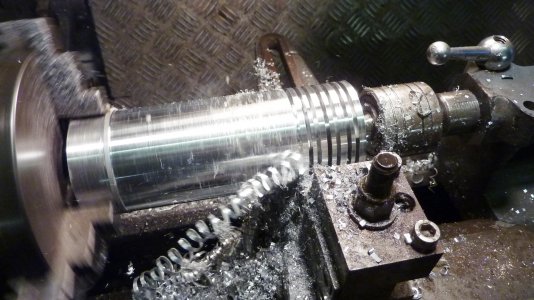- Joined
- Jan 2, 2013
- Messages
- 3
Hi guys,
this is my first post so please be gentle!
I have needed to make some 60mm diameter pulleys which i have already successfully done out of a piece of material I had about the workshop. I have managed to part off in the lathe quite successfully with this material but now its all used up, but I need to make some more!
My problem is other pieces of material I have tried to part off, chatter like hell and I just cant machine them very well.
Question is, what would the specification of the first piece of aluminium be for it to turn so easily? I have had it for years and no idea where it came from or its specification...
If anyone can recommend a suitable alloy I could purchase I would be very grateful. The part I am making is of low stress, low wear, and surface finish is not an issue.
Thanks in advance

this is my first post so please be gentle!
I have needed to make some 60mm diameter pulleys which i have already successfully done out of a piece of material I had about the workshop. I have managed to part off in the lathe quite successfully with this material but now its all used up, but I need to make some more!
My problem is other pieces of material I have tried to part off, chatter like hell and I just cant machine them very well.
Question is, what would the specification of the first piece of aluminium be for it to turn so easily? I have had it for years and no idea where it came from or its specification...
If anyone can recommend a suitable alloy I could purchase I would be very grateful. The part I am making is of low stress, low wear, and surface finish is not an issue.
Thanks in advance


